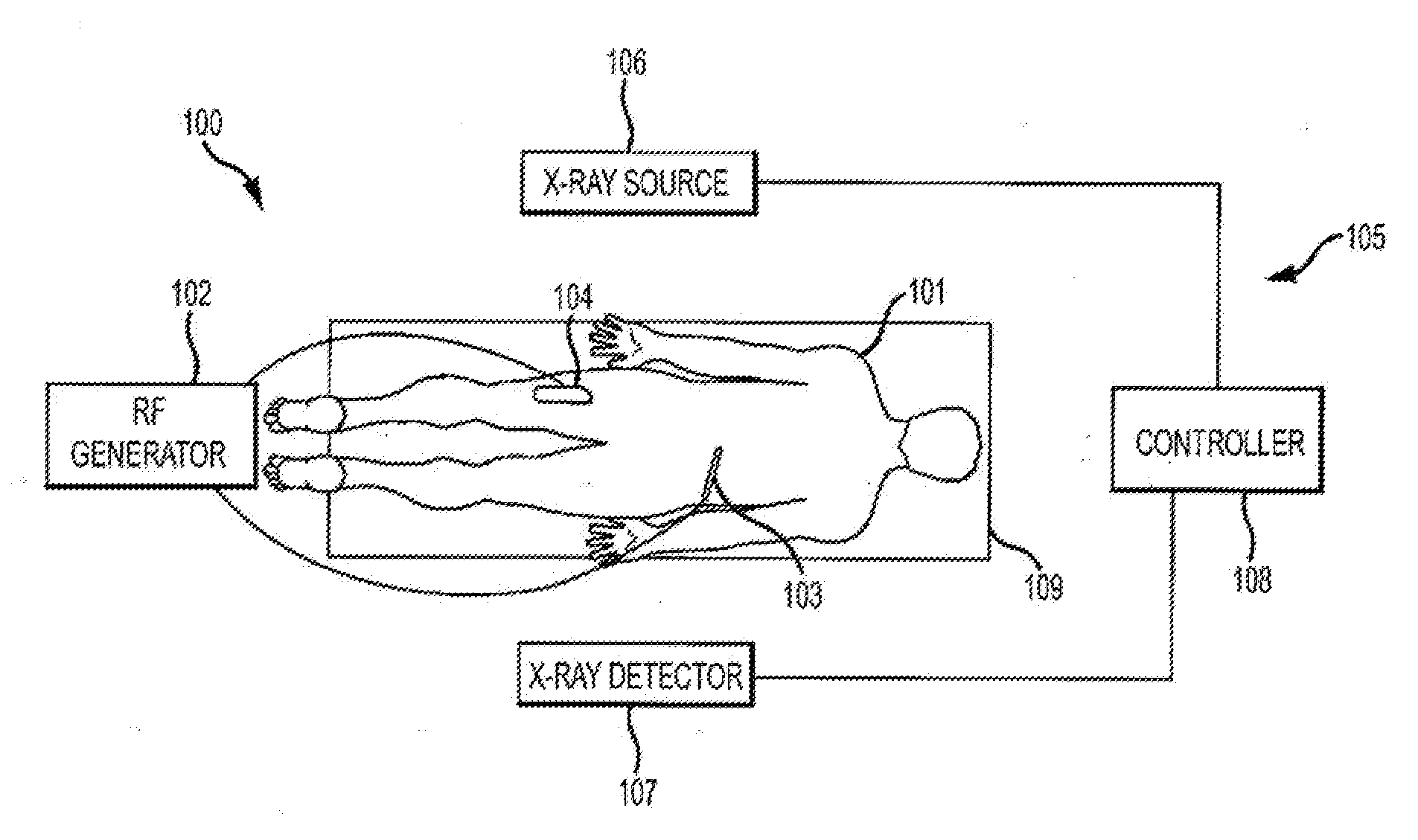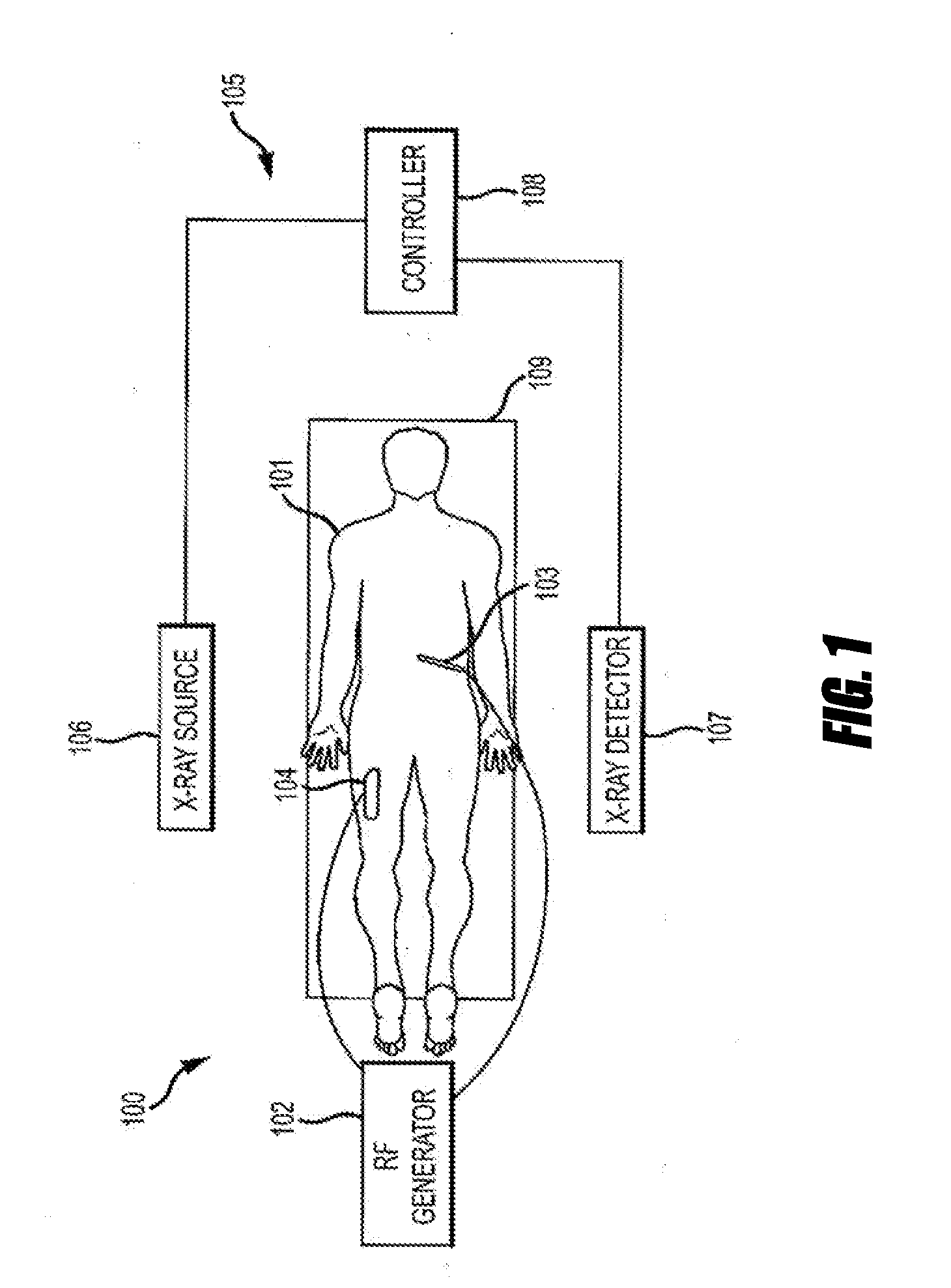Systems and methods for tissue ablation
a tissue ablation and system technology, applied in the field of thermal ablation systems and methods, to achieve the effect of facilitating procedures and inhibiting the ability of nerves
- Summary
- Abstract
- Description
- Claims
- Application Information
AI Technical Summary
Benefits of technology
Problems solved by technology
Method used
Image
Examples
example 1
[0242]Sections of raw muscle tissue were allowed to equilibrate to 37° C. in a distilled water bath. A needle with tines deployed was positioned to contact the tissue surface in 10 trials and was inserted into tissue in 10 trials. A Radionics RFG 3C RF generator energy source was set at 75° C. for 80 seconds. Propagation of tissue coagulation was documented with video and a calibrated Flir T-400 thermal camera. Tissue samples were sectioned and coagulation zones measured. Infrared observation demonstrated symmetric and homogenous lesion progression without hot spots or focal over-impeding. Calculated volume averaged 467±71 mm3 / lesion. Topography was elongate spheroid offset from the central axis toward the filaments. Thus, the needle reliably produced lesions that are potentially useful in spinal applications.
example 2
[0243]A 47 year-old male with recalcitrant right-sided lumbar zygapophysial joint pain presented for radiofrequency medial branch neurotomy. The diagnosis had been made by greater than 80% relief documented following both intraarticular z-joint injection and confirmatory medial branch blocks.
[0244]The patient was placed in a prone position on the fluoroscopy table and standard monitors were applied. No sedation was administered. The lumbar region was extensively prepped with chlorhexidine-alcohol and draped in routine sterile surgical fashion. The C-arm was adjusted to visualize a true AP of the L4 / 5 intervertebral disc space with vertebral end plates squared-off, and spinous process positioned between the pedicle shadows. The C-arm was rotated 30°-40° ipsilateral to the target joint until the base of the SAP of the L4 and L5 were clearly visualized, A target point was identified at the midpoint of the base of the SAP, and the overlying skin and subcutaneous tissues were infiltrated...
PUM
 Login to View More
Login to View More Abstract
Description
Claims
Application Information
 Login to View More
Login to View More - R&D
- Intellectual Property
- Life Sciences
- Materials
- Tech Scout
- Unparalleled Data Quality
- Higher Quality Content
- 60% Fewer Hallucinations
Browse by: Latest US Patents, China's latest patents, Technical Efficacy Thesaurus, Application Domain, Technology Topic, Popular Technical Reports.
© 2025 PatSnap. All rights reserved.Legal|Privacy policy|Modern Slavery Act Transparency Statement|Sitemap|About US| Contact US: help@patsnap.com



